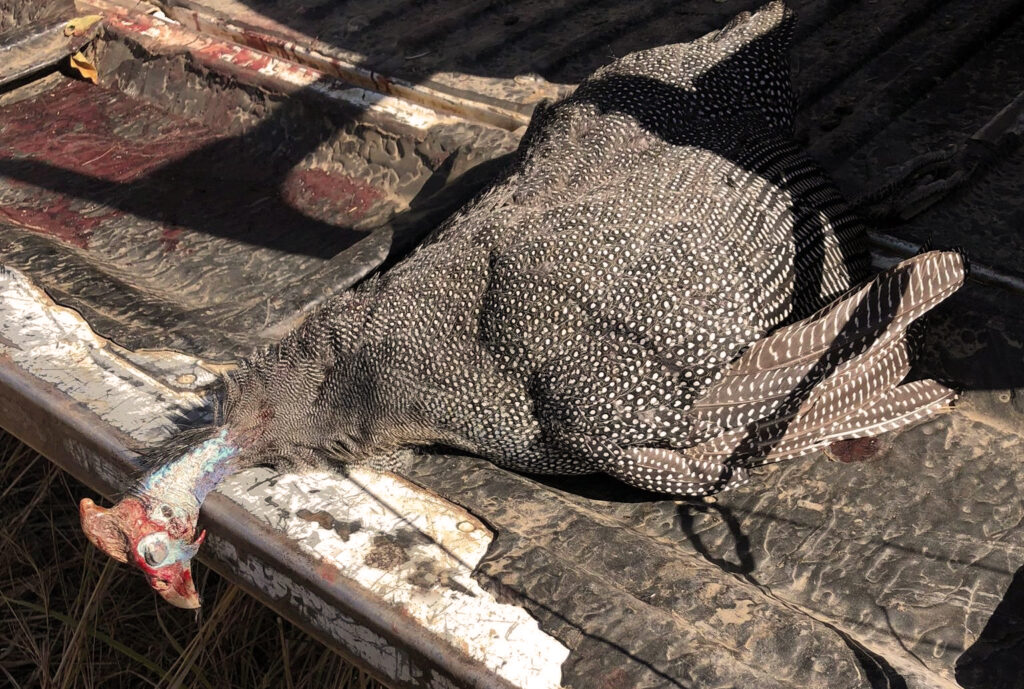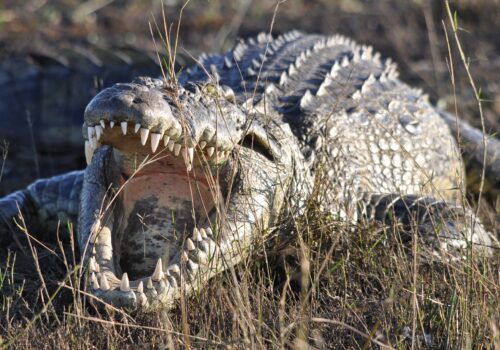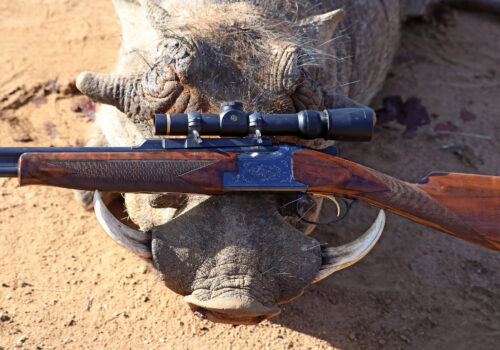
A Guineafowl Shoot In Zambia
By Michael Maynor
Ernest Hemingway wrote, “When you have shot one bird flying, you have shot all birds flying. They are all different, and they fly in different ways, but the sensation is the same, and the last one is as good as the first.”
If you have ever bird hunted, then you understanding Hemingway’s remarks. It does not matter the bird or where you shoot it. The sensation feels the same, and as the hunting portion of my first safari in Africa came to a close, a quick morning hunt for a couple of guineafowls for breakfast would prove Hemingway’s comments to be true and to be the capstone on a beautiful adventure.
It was the last evening of the hunting portion of our Safari, in the morning my hunting companion and good friend Charles Reedy and I would pack our bags and travel to Victoria Falls to relax before making the long trek back to the states. During dinner our Professional Hunter, Strang Middleton, suggested we try and shoot a couple guineafowl for breakfast in the morning before we left for the falls. I had witnessed how well wild guineas flew compared to their domesticated cousins, and I was eager to hunt them. There was no shortage of guineas on the farm, and it did not take us long to get on the first flock the following morning. Strang dropped me off ahead of the birds, and the trackers walked and flushed them up. They flew past my position , and I picked a bird, emptied both barrels , but no luck. We regrouped and found a bigger flock. This time I was positioned in one location, and Strang was in another. Once again, the trackers flushed up the birds, and several guineas flew over me. I once again picked a fowl, pulled the trigger, and watched it fold. Strang got one as well. We met back at the truck and spent a few moments discussing the morning’s shoot.

We returned to the house where the guineas were cleaned, cut into tenders, and served with eggs and bacon; it was an excellent breakfast and a high end to our hunting time in Zambia. There are several members of the guineafowl bird family, but the helmeted guineafowl (Numida meleagris) is the most well-known. Helemeted guineafowl, of which there are nine subspecies, are typically found south of the Sahara. The bird is a large, around 21 to 23 inches in size, with a round body and small head. They weigh about 2.9 lbs, and the plumage on the body is gray-black and covered with white dots. Helmeted guineafowl have featherless heads that are brightly colored with waddles on each side of their beaks and a crested “helmet” on top, which gives the species their name. While guineas are strong flyers, they prefer to walk and are exceptional runners. They travel in large flocks and can cover nearly ten miles in a day. Guineas are ordinary on most farms throughout the South, where they freely roam and earn their keep by helping to control insects, especially ticks. Guineas are also kept on farms for another reason, which is their ability to act as “watchdogs.” They are incredibly vocal birds and, when disturbed, make loud calls.
To hear why guineafowl make great watchdogs , click below
I have lived with guineafowl all my life, but today as I watch them wandering the farm, I don’t view them as just some exotic addition. They remind me of days afield in Africa.

Michael Maynor
I am a proud native of North Carolina with a deep love for the sporting lifestyle and everything Southern. My book collection seems to grow endlessly, and I have a particular fondness for collecting vintage duck decoys. Despite appearing content, my heart longs to return to Africa for another safari adventure. John 3:16


You May Also Like

The Off Button
August 30, 2021
Hunting A Luangwa Crocodile
July 1, 2022